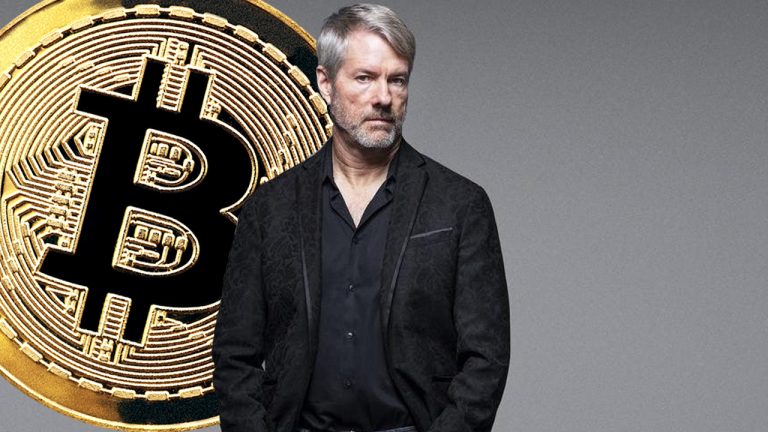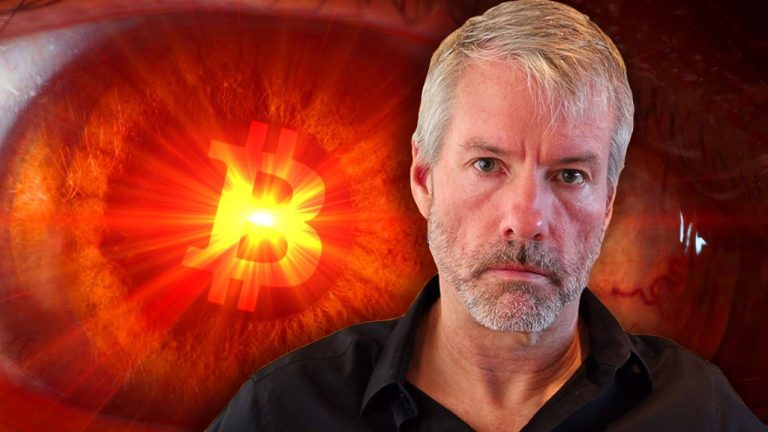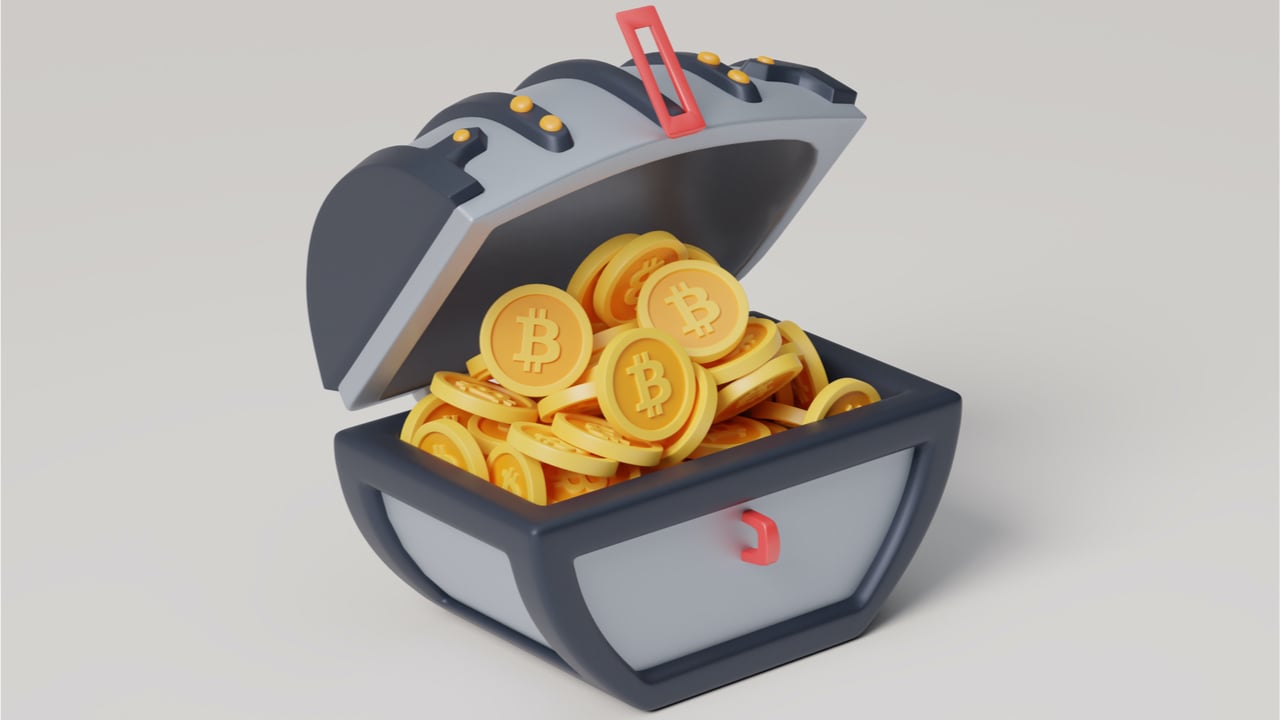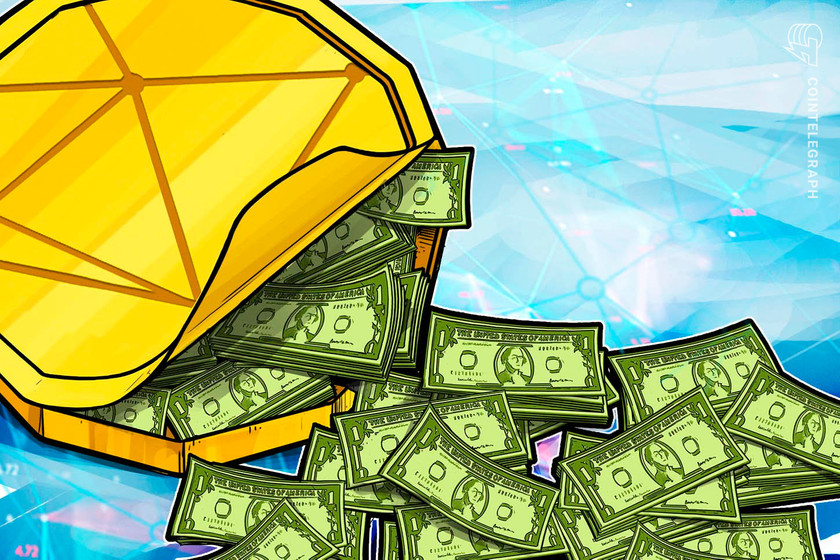 Nine days after publicly listed company Microstrategy purchased 6,455 bitcoins, the firm’s CEO, Michael Saylor, announced the purchase of an additional 1,045 bitcoins. The business intelligence (BI) company now holds a total of 140,000 bitcoins, worth $3.97 billion. Microstrategy Buys Another Batch of Bitcoins Microstrategy has begun acquiring bitcoin (BTC) again, after purchasing 6,455 bitcoins […]
Nine days after publicly listed company Microstrategy purchased 6,455 bitcoins, the firm’s CEO, Michael Saylor, announced the purchase of an additional 1,045 bitcoins. The business intelligence (BI) company now holds a total of 140,000 bitcoins, worth $3.97 billion. Microstrategy Buys Another Batch of Bitcoins Microstrategy has begun acquiring bitcoin (BTC) again, after purchasing 6,455 bitcoins […] According to Microstrategy’s executive chairman Michael Saylor, his company has recently purchased 301 bitcoin for $6 million at an average price of $19,851 per coin. Saylor detailed that the firm’s balance sheet now holds 130,000 bitcoins as the company’s stash is the largest number of bitcoins held by a publicly listed business today. Microstrategy Acquires […]
According to Microstrategy’s executive chairman Michael Saylor, his company has recently purchased 301 bitcoin for $6 million at an average price of $19,851 per coin. Saylor detailed that the firm’s balance sheet now holds 130,000 bitcoins as the company’s stash is the largest number of bitcoins held by a publicly listed business today. Microstrategy Acquires […] 304 days or roughly nine months ago, 42 companies held bitcoin on their balance sheet with an aggregate total of 1,350,073 bitcoin on March 1, 2021. Today, metrics indicate there are 59 companies, a few countries, and exchange-traded funds (ETFs) with 1,499,493 bitcoin held in treasuries. Private and Public Companies, ETFs, and Countries — Treasuries […]
304 days or roughly nine months ago, 42 companies held bitcoin on their balance sheet with an aggregate total of 1,350,073 bitcoin on March 1, 2021. Today, metrics indicate there are 59 companies, a few countries, and exchange-traded funds (ETFs) with 1,499,493 bitcoin held in treasuries. Private and Public Companies, ETFs, and Countries — Treasuries […]
It appears EOS holders are extremely dissatisfied with the direction the network has headed.
Members of the EOS ecosystem, a blockchain designed to power decentralized applications, or DApps, are voicing their dissatisfaction with former developer Block.one. As a result, they have formed their own organization and elected new leadership in an effort to revamp the network.
As accessed by Cointelegraph, Yves La Rose, the "community-elected CEO" of the novel EOS Foundation, gave the following prepared statement during a virtual conference:
“There's no sugar-coating it, EOS, as it stands, is a failure. The last three years or so have been nothing but dwindling in terms of market cap and in terms of token value. When we look at EOS compared to the rest of other cryptos, especially in satoshi levels, EOS has been a terrible investment. It's been a terrible financial, time and community investment. The reality is that many people no longer want to be associated with EOS because of its tarnished reputation. EOS, as it stands, is a failure.”
Block.one is a company registered in the Cayman Islands and was the original developer of the EOS network. In 2018, the company sold 900 million EOS tokens for proceeds of over $4 billion in an initial coin offering (ICO), the largest in the world at the time, despite not having a functional product. The year after, Block.one settled with the United States Securities and Exchange Commission for $24 million over allegations of unregistered sale of securities during its ICO. The token sale also faces allegations of market manipulation.
La Rose had the following to say regards to Block.one:
“Another thing to note, in terms of the roadmap is that we can no longer rely on Block.one to support and guide EOSIO development. They have lost all key developers and have pivoted away from being a blockchain development company towards being an asset management company.”
Despite the negative outlook, development activity on the EOS blockchain has seemingly held steady. According to block explorer bloks.io, the most prominent DApp on the EOS network is decentralized exchange Alcor, with a 24-hour trading volume of $44.6 million. Second-in-line is AtomicMarket, a non-fungible tokens marketplace with $3.81 million transactions in the past 24 hours.
La Rose concluded the panel with the following comment:
“Today is the genesis of what EOS has the capacity to become. There are no more excuses, there are no more roadblocks. We have everything we need. What becomes of EOS next is simply what we make of it.”

New research asserts that EOS and ETH were wash-traded on exchanges to manipulate prices during EOS’s multi-billion dollar ICO.
New research has shed more light on the crypto industry’s largest-ever token sale, alleging that foul play may have been afoot during EOS’s initial coin offering (ICO) four years ago.
Researchers from the University of Texas have raised fresh concerns regarding Block.one’s record $4.362 billion ICO for the EOS blockchain in 2017 and 2018. The highly-anticipated project was backed by industry heavyweights including PayPal co-founder Peter Thiel alongside billionaire hedge fund managers Alan Howard and Louis Bacon. The research does not accuse Block.one itself of any wrongdoing and the company has cited a report stating there was no evidence it was involved.
On Aug. 31, Professor John Griffin of the Austin McCombs School of Business and financial analysis firm Integra FEC published their findings in a paper titled “Were ETH and EOS Repeatedly Recycled during the EOS Initial Coin Offering?” — alleging that wash-trading played a key role in EOS’s price discovery. Bloomerbe
According to the paper and outlined in an investigation by Bloomberg, EOS was allegedly wash-traded on the Binance and Bitfinex cryptocurrency exchanges in an effort to artificially inflate the prices. Wash-trading describes the process where an entity simultaneously acts as the buyer and seller at the same asset to artificially bolster volume or manipulate prices.
Griffin wrote that artificial demand from suspect accounts created the illusion of demand for the token and pushed prices up:
“First, it directly manipulated EOS’s offering price upward through the extra buying and inflated the market value of the token. Second, it created the false impression of value of the token which enticed others to want to purchase the ICO token.”
The research allegedly identified 21 accounts that recycled EOS tokens during the ICO. Funds identified as suspect amounted to 1.2 million ETH worth around $815 million at the time. Ether was the sole cryptocurrency used to buy EOS during the year-long ICO.
The analysis claims that Ethereum accounts were created in order to repeatedly purchase EOS over time. It claims that a "significant portion" of the Ether raised during the token sale appears to have been "recycled by transferring the ICO contributions through a series of obfuscating intermediary accounts and finally arriving at Bitfinex."
“2.895 million Ether ($1.721 billion USD), or 39% of the Ether raised in the crowdsale, are also traced from the ICO crowdsale wallet back to Bitfinex.”
Griffin did not identify the owners of the accounts or point the finger toward Block.one regarding the alleged wash-trading, but noted: “These suspicious accounts accounted for almost a quarter of EOS purchases by the end of the crowdsale.”
Professor of law at Cornell Law School, Robert C. Hockett, said that he worked for more than one month on the story alongside media outlet Bloomberg — which published its findings on Sept. 2.
Worked with the Bloomberg buddies for a month on this one. Rather remarkable story. Vulgar pre-'33 securities scandals are apparently being crudely recapitulated across the crypto space now. https://t.co/Ogu5nSf6oF
— Robert Hockett (@rch371) September 2, 2021
According to Bloomberg, Block.one responded to the paper by referencing a July document authored by law firm Clifford Chance LLP that asserted there was “no evidence that Block.one purchased tokens on the primary market.”
Related: Startup Darling EOS Cashes In Millions Of ETH As ICO Scorn Continues
The same John Griffin published a paper in October 2019 titled “Is Bitcoin Really Un-Tethered?” that claimed the leading stablecoin Tether (USDT) was wash traded to influence Bitcoin prices during the 2017 bull market. Speaking to Cointelegraph in Feb. 2020, the firm behind Tether, iFinex, labeled the claims “reckless and false.”
Manipulation or otherwise, EOS has largely fallen out of favor with crypto traders and investors. Since ranking among the top five crypto assets by market cap in mid-2018, EOS has since tumbled to rank 35th by capitalization.
The token currently trades for $5, down 77% from its April 2018 all-time high of $22.70.

Retail traders turned their backs on EOS, but derivatives data shows pro traders maintaining a bullish perspective for the short-term.
EOS rallied in May after Block.one, a blockchain software firm, announced a $10 billion funding round to build an EOS-based crypto exchange platform called Bullish. The EOSIO development company revealed that it had raised capital from Peter Thiel and Mike Novogratz, as well as hedge fund managers Alan Howard and Louis Bacon.
In light of the 'bullish' news, the recent $6 local top stands 60% below the $15 high reached on May 12, and this leaves investors with little reason to celebrate. At the moment, retail traders are not comfortable using leverage for bullish positions and professional traders have been neutral-to-optimistic since mid-July.

Analysts also pointed to a May 2 report commissioned by Block.one that suggested an increase in the inflation rate from 1% to somewhere between 1.2% and 3.8%. The new issuance rate would be necessary to increase financial incentives for voters and block producers.
However, the lack of deliveries and partnerships caused EOS to quickly lose steam, and the price fell to a low at $3.04 on June 22. The bearish trend ended on June 23, as the little-known 'Bullish' exchange said it would be going public on the New York Stock Exchange via a special-purpose acquisition company, or SPAC.
A positive and lasting trend initiated as the 'Bullish' exchange released its private alpha version on July 27 and promised a full launch later in 2021. The project also mentioned that it would have spot trading, margin trading, and liquidity pools.
Finally, on Aug. 19, EOS announced free access to live pricing data using real-time market information provided by AlgoTrader. The Swiss-based startup oracle includes multiple assets from various exchanges and can create synthetic instruments, derivatives, and stablecoins.
To understand whether traders are leaning bullish as EOS price holds the $5 support, one should analyze the perpetual contracts futures data. This is the retail traders' preferred leverage instrument because its price usually perfectly tracks the regular spot markets. There is also no need to manually roll over contracts nearing expiry, as required on quarterly futures.
In any futures contract, trade longs (buyers) and shorts (sellers) are matched at all times, but their leverage varies. Consequently, exchanges will charge whichever side is using more leverage at a funding rate to balance their risk, and this fee is paid to the opposing side.
Neutral markets tend to display a 0% to 0.03% positive funding rate, equivalent to 0.6% per week, indicating that longs are the ones paying it.

Data reveals a modest excitement building up from Aug. 8, which lasted less than 10 days. The positive funding rate shows that longs (buyers) were the ones paying the fees, but the movement seems reactive to the price increase and faded as EOS failed to breach the $6 resistance.
It is also useful to analyze the premium quarterly futures contracts, as whales and arbitrage desks trade such instruments more frequently. In the fixed-month contracts, eventual demand imbalances are reflected by a price difference versus regular spot markets.
Healthy markets should display a 0.5% to 1% premium, which is equivalent to 3% to 6% annualized. If the futures contract's premium is nonexistent, it is a bearish indicator because investors are not comfortable creating long positions using leverage.
Related: Bitcoin's race to $50K heats up as solid institutional backing continues

There has been no change in the 6% annualized premium this time despite EOS's price movement. However, data shows that professional traders have been slightly bullish since mid-July, while retail traders were primarily flat apart from a brief 10-day period.
Although it remains unclear how the 'Bullish' exchange launch might impact the price of EOS, derivatives indicate that whales and arbitrage desks positively reacted to the news and have kept the bullish stance ever since.
The views and opinions expressed here are solely those of the author and do not necessarily reflect the views of Cointelegraph. Every investment and trading move involves risk. You should conduct your own research when making a decision.